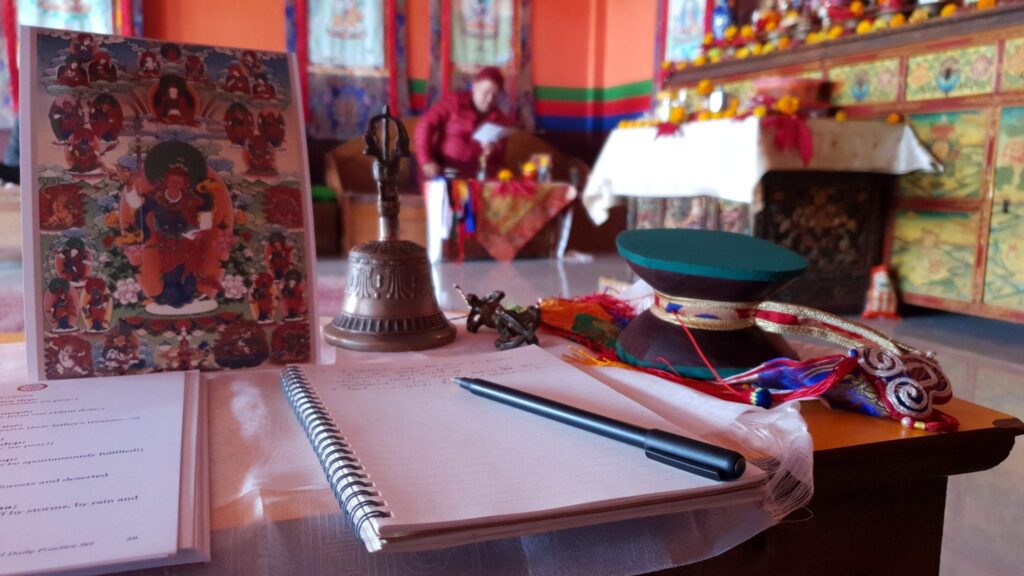Sadhana Ritual Course: The Perfect Setting

This year’s Sampa Lhundrub Sadhana Ritual Course is taking place in a beautiful new monastery above Narayanthan Kathmandu, on a hill just far and high enough to escape the city pollution. The weather is getting colder, but the sun shines during the day, so we are enjoying good weather, clean air and an amazing view!
Sadhana Ritual Course Empowerment: Strengthening our Connection
We began the program by receiving the required empowerment. This time, Tulku Jampa Dorje bestowed it at the request of Kyabgön Phakchok Rinpoche. Tulku la is one of the senior lamas of our Ka-Nying monastery. His previous incarnation, Chödrub Rinpoche from Nubri, was an accomplished yogi whose main teachers were Samten Gyatso (Tulku Urgyen Rinpoche’s uncle and root guru), Khakyab Dorje (the 15th Karmapa), and Khyentse Chöki Lödro. Tulku Jampa Dorje’s main gurus were Tulku Urgyen Rinpoche, Dilgo Khyenste Rinpoche and the 16th Karmapa, who ordained him as a monk. Tulku-la has presided over pujas in Ka-Nying gompa on various occasions as the Vajra Master, and has been invited several times to give transmissions, to teach and to guide practices in our Dharma centers in Asia.
In the words of Drubla Sherab Dorje, “Tulku Jampa Dorje has great qualities as a practitioner and as a Dharma teacher, while being very humble. Therefore Kyabgön Phakchok Rinpoche requested him to bestow the necessary empowerments for our ritual course this year.” We are very fortunate to receive them from him and strengthen our connection with such a practitioner from our lineage.
Sadhana Ritual Course Teachings: Not Just for Monks Anymore

Sherab Dorje is our teacher during the course. He has great knowledge and experience in the meaning and rituals of the Chokling Tersar, and he is more than happy to share with us in detail. As the course functions as a teaching retreat, we have four daily practice sessions, with teaching sessions in between. We learn how to follow the sadhana and chant each section properly. Additionally we perform ritual aspects, from playing the instruments, to making tormas. We also learn how to serve as chanting and shrine masters.


Tsondru Gyatso-la, an experienced ritual master and Ka-Nying monk, teaches us everything there is to know, including how to set the shrine, make tormas, prepare the offerings, and what to do as ritual master during the puja. We learn how to structure and understand our individual practice, and also how to perform the rituals in a group. There is no information left out! As Drubla Sherab Dorje has explained, the structure of this practice is similar to other sadhanas. Now I can understand many things that go on in those elaborate ceremonies that take place in the monastery!
Thanks to the generosity and care of Kyabgön Phakchok Rinpoche we are so fortunate to receive this style of in-depth training, which used to be reserved exclusively for monastic practitioners!

Marcela Lopez







